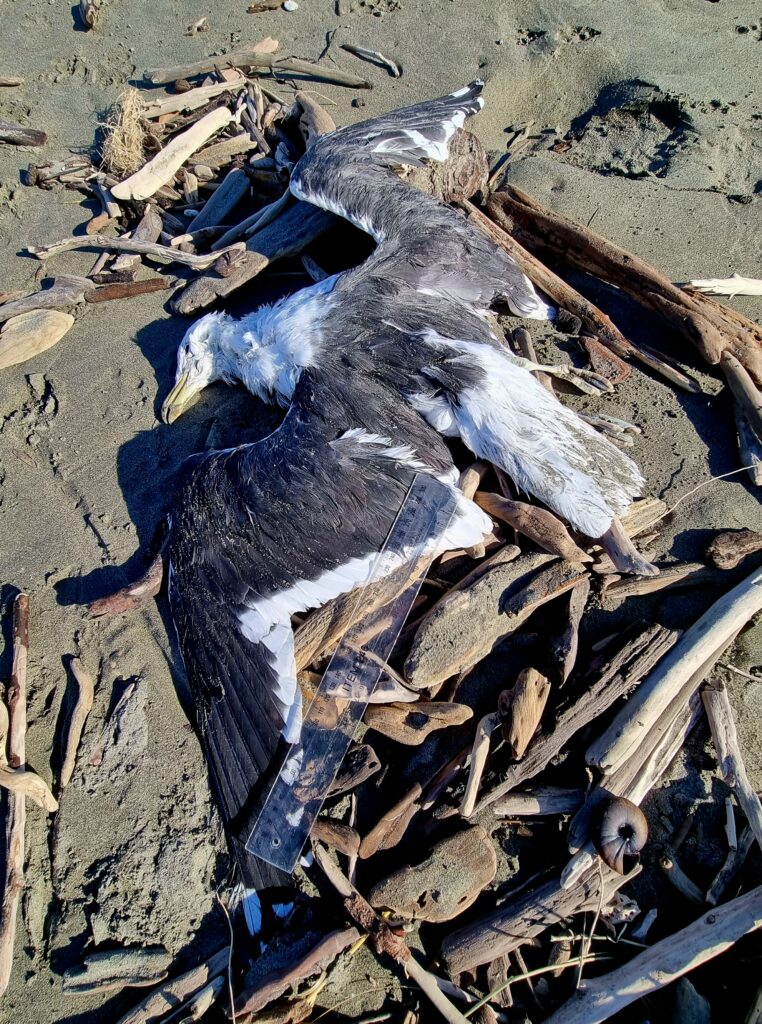How is beach patrolling done?

A beach patrol is a walk along and above the high tide line of a beach or rocky coastline to find, identify and record what birds have been washed ashore. Patrols may occur at any time of the year and after any type of weather, though highest mortalities often occur after storms with onshore winds, especially in winter. Exposed beaches often yield more results than do land-locked harbour coastlines. All birds should be removed from the beach during each patrol to prevent the same birds being counted by another patroller. The best approach is to take each dead bird that is recorded and place it well above the high tide line, such as into the sand dunes.
Opportunistic patrols are valuable, but regular patrols yield a greater volume of information. Some districts organise groups of members to take turns to lead a monthly or fortnightly patrol of suitable beaches. Regular monthly beach patrols are carried out in Northland, Auckland, South Auckland, Waikato and Southland.
A “Beach Patrol Observation Form” should be used which replaces the Beach Patrol cards and sheets that have been filled out in the past. The new form can be downloaded HERE and observers may like to print it at home before each patrol. Instructions for submitting observations are on the form and explained in detail HERE. A completed form can be retained as a permanent record of a patrol.
Accurate identification of birds is essential
Accurate identification of birds is absolutely essential, and is not always easy. If you are not confident with identification of a bird, please do not submit observations for that species. Beginners should find out who else does beach patrols in the area and who the nearest authority to confirm their identification is. In districts where regular patrols are done, a beginner can learn much by joining them and getting instruction in diagnostic characters from an experienced patroller. A useful resource is the Beach Patroller’s Guide to Stormcast Seabirds. Beginners should also learn and practise the standard method of measuring and weighing birds. Ask the Regional Representative for advice on these points.
If no-one locally patrols beaches, then contact the Beach Patrol Convenor or Regional Representative for advice on what to do with birds that cannot be identified. In the meantime, wrap all retained corpses in two sealed plastic bags and place in a deep freezer until an expert can identify them. Remember to attach a note or label to each bird stating the name and address of the collector, date collected, name of the beach and any other relevant details.
Please note that you do not require a permit if you collect corpses for identification purposes, provided you do not keep them long term. Retaining dead birds for private collections, however, requires a permit that you would need to obtain from your local museum.